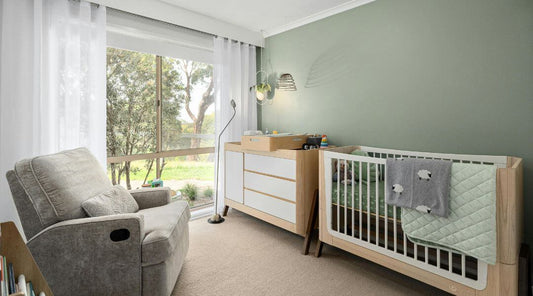As parents, we often juggle multiple responsibilities, and finding time to engage our little ones in meaningful activities can feel overwhelming. Fortunately, the Montessori method provides practical solutions that encourage independence, responsibility, and creativity without requiring a major time investment. This article explores seven easy Montessori hacks that busy parents can implement in their daily lives, keeping children engaged and fostering their learning. Whether you’re on the hunt for what to look for in a stroller, need tips on organizing a baby dresser, or want ideas to make the nursery rocking recliner a multi-functional space, we have you covered!
Understanding the Montessori Approach
The Montessori philosophy is founded on the principles of child-led learning, allowing children to explore at their own pace. With a focus on fostering independence and creativity, this approach can easily fit into the busy lives of parents. Here are seven practical Montessori hacks designed for parents on the go.
1. Create a Dedicated Learning Space
Designating a small area in your home specifically for educational activities not only gives children a sense of purpose but also encourages them to explore their interests. This doesn’t mean you need a separate room; a corner of your living area or even a well-organized space in the nursery can work.
Tips for Setting Up a Learning Area:
- Use child-sized furniture to promote independence.
- Include accessible shelves with books, toys, and learning materials.
- Rotate items regularly to keep the space fresh and stimulating.
Incorporating a low shelf in your baby dresser can also act as an organized space for quick access to books and toys, making them visible and inviting.
2. Encourage Practical Life Skills
Giving children simple tasks around the house promotes essential life skills while keeping them entertained. Integrating chores into your daily routine allows children to participate, learn, and adapt to their environment.
Practical Activities You Can Try:
- Let them help with meal preparation, such as washing vegetables or mixing ingredients.
- Involve them in tidying up; for instance, letting them store their toys in a low cabinet or organize items in the baby dresser.
- Use a nursery rocking recliner creatively by reading stories or engaging them in play while you relax.
By doing these activities together, you nurture a sense of responsibility and accomplishment.
3. Implement Choice and Control
Allowing your child to make choices empowers them and encourages concentration. Simple decisions, such as what to wear or what food to eat, can enable your child to express themselves authentically.
Ideas for Encouraging Choices:
- Set up clothing options in their baby dresser within reach so they can select what they want to wear.
- Present a few healthy snack options during mealtime and allow them to pick which one they prefer.
- Provide several toys and books at a time while rotating them every few weeks to maintain interest.
This strategy also applies to choosing how to spend time in the nursery, whether it be reading a book or playing with toys while lounging in the nursery rocking recliner.
4. Establish Routines
A structured routine helps children feel secure and understand what is expected of them. This is particularly beneficial for busy parents, as it creates predictability amidst the chaos of a hectic day.
How to Create Effective Routines:
- Set specific times for daily activities, such as mealtime, playtime, and relaxing in the nursery.
- Use visual schedules with pictures to illustrate the routine for younger children.
- Incorporate transitions that allow them to prepare for the next activity, such as tidy-up songs or countdowns.
When it comes to mealtimes, selecting what to look for in a stroller can enhance outdoor experiences, helping maintain those routines even during outings.
5. Simplify Play with Open-Ended Toys
Open-ended toys stimulate creativity and independence, encouraging children to invent games and use their imagination. As busy parents, investing in a few quality pieces can reduce clutter while providing endless entertainment.
Examples of Open-Ended Toys:
- Blocks of varying shapes and materials.
- Art supplies such as crayons and paper for creative expression.
- Loose parts like shells, rocks, or natural elements that promote exploration.
You can store these toys conveniently in the baby dresser, ensuring they are easy to access for spontaneous playtime!
6. Make the Most of Meals
Mealtimes can become a fun and engaging experience, turning into opportunities for learning and bonding. By incorporating Montessori principles into the way you approach meals, you can also instill healthy habits in your child.
Mealtime Hacks to Consider:
- Involve your child in meal preparation; give them tasks suited to their age.
- Use a high chair baby with adjustable settings to ensure comfort and promote independence as they grow.
- Encourage them to serve themselves appropriately using child-sized utensils.
By integrating these principles, meal times can become both enjoyable and educational!
7. Foster Independence in Daily Tasks
One of the most significant aspects of the Montessori method is nurturing independence in children. By providing them opportunities to accomplish tasks themselves, you boost their confidence and self-esteem.
Ways to Foster Independence:
- Use child-friendly tools and furniture, such as a nursery rocking recliner, where they can comfortably sit and engage in activities.
- Encourage them to dress themselves or put their items in the baby dresser.
- Designate stretching, breathing, or calm-down activities before transitioning to the next task.
These experiences will help your child develop essential skills while providing them with a sense of personal achievement.
Unlocking Potential Through Practical Changes
Embracing the Montessori approach can be a transformative journey for both parents and children, fostering independence, creativity, and a love for learning. By implementing these seven simple hacks, busy parents can nurture their child’s development without feeling overwhelmed. Remember, each small change you make can have a significant impact on your child's growth and autonomy.
As you navigate parenthood, take pride in your efforts to create an engaging atmosphere for your little one, enabling them to thrive independently. With a little creativity and intention, raising a curious and confident child becomes a joyful adventure. Embrace the process, trust your instincts, and watch your child flourish in all their endeavors!









